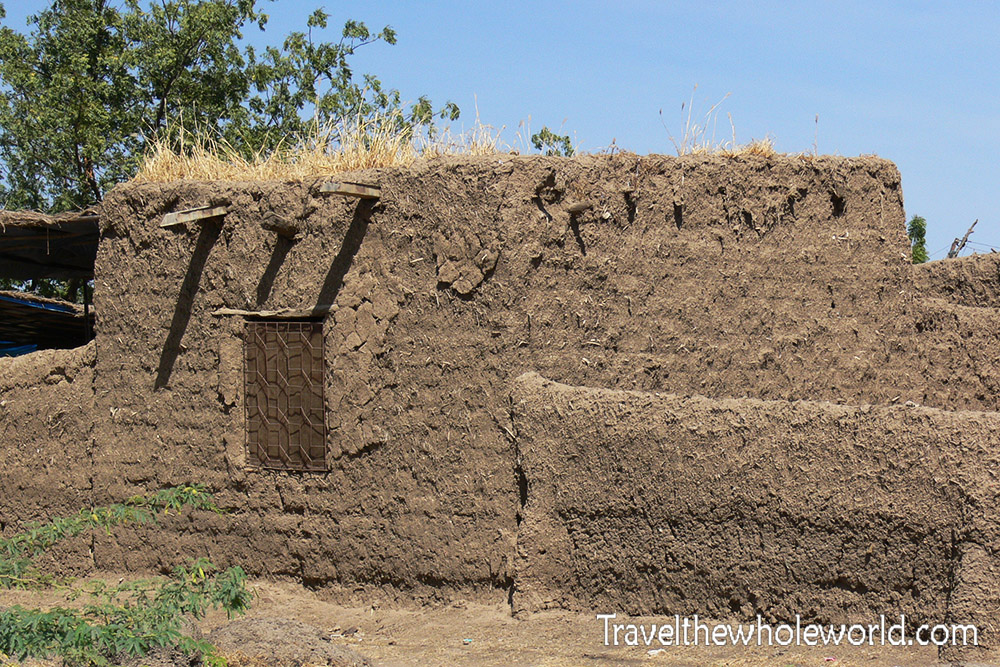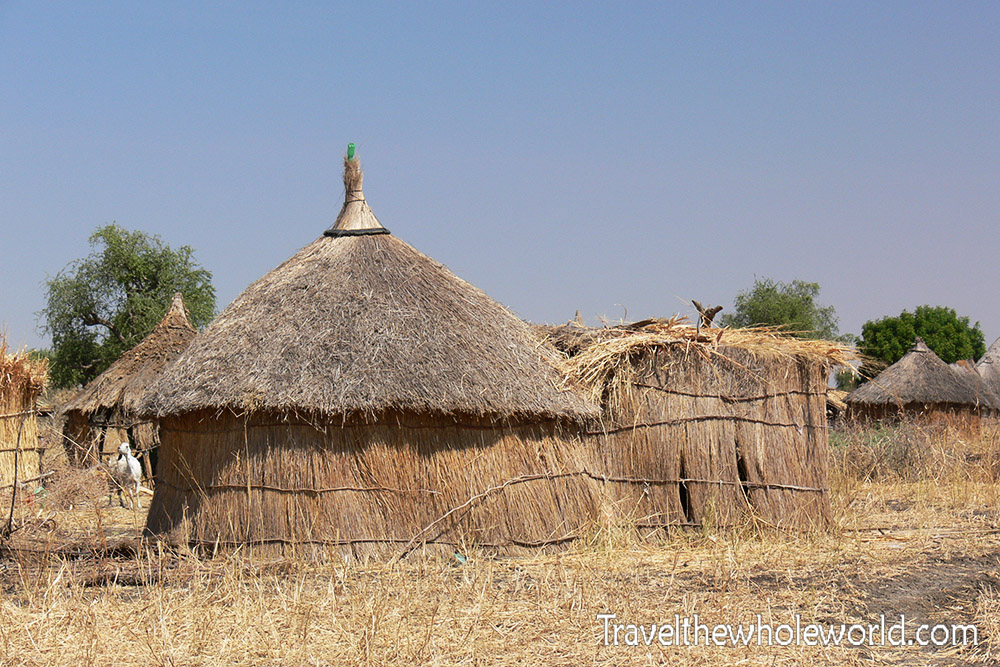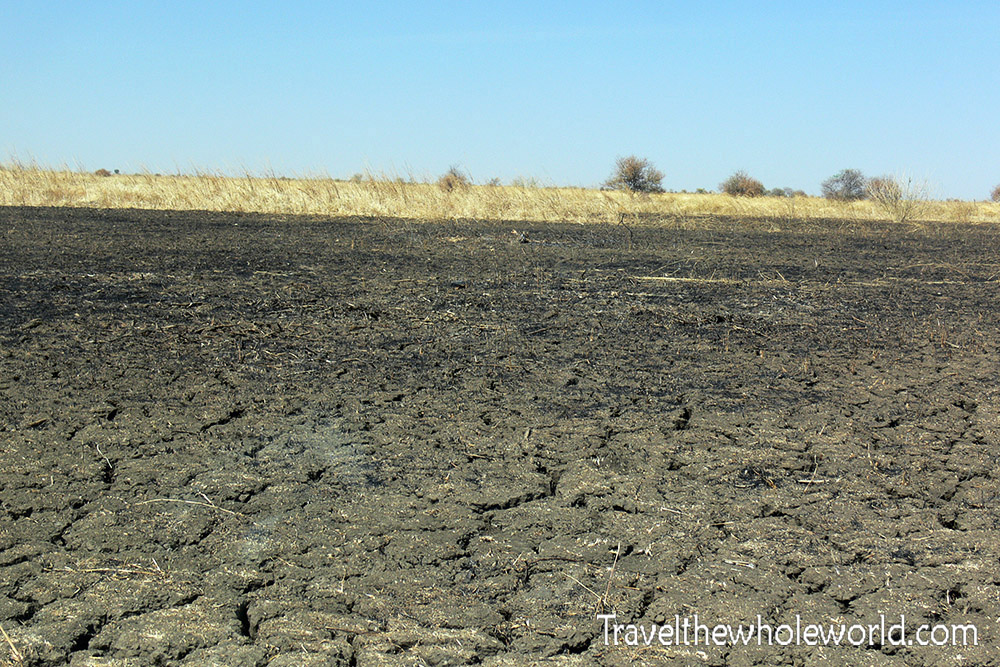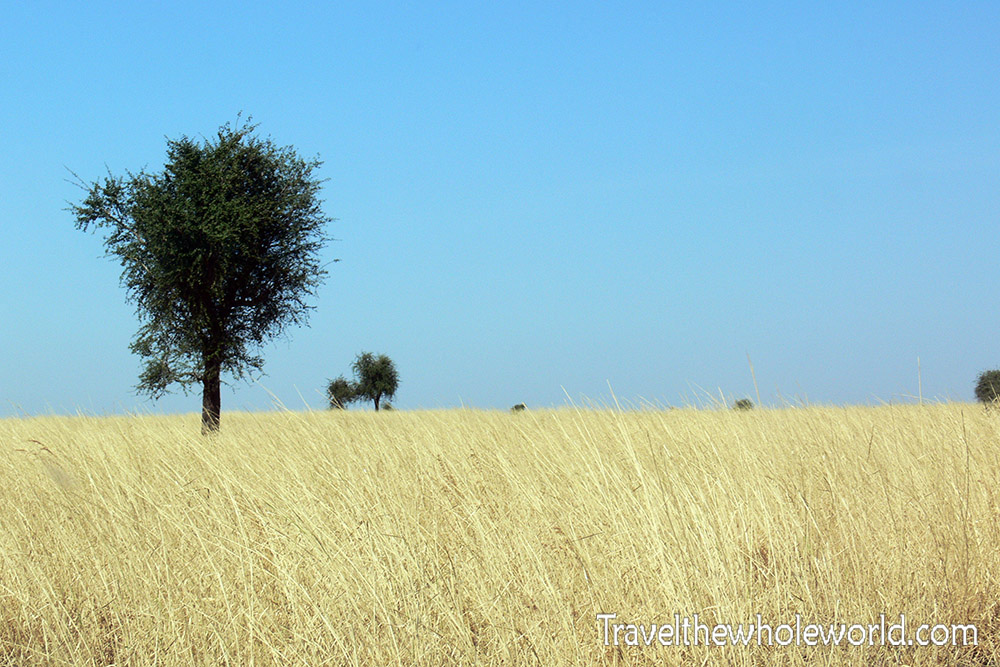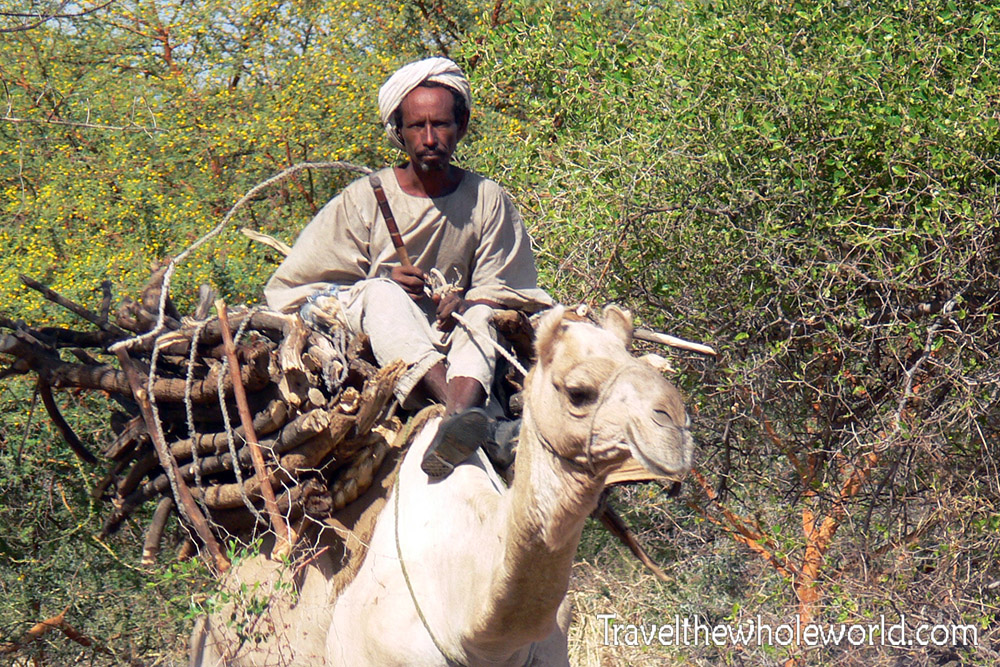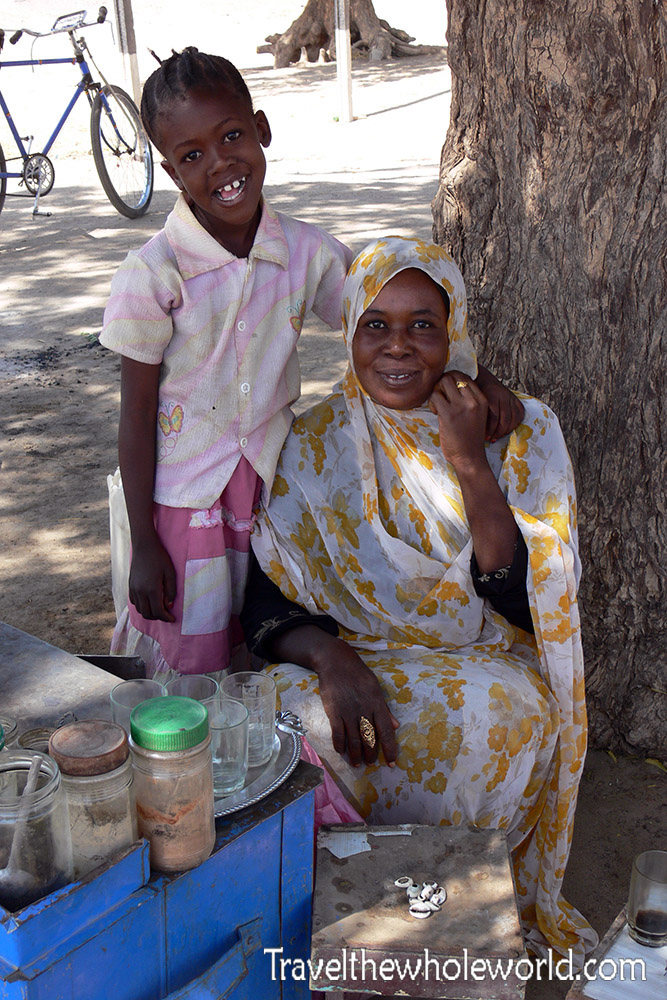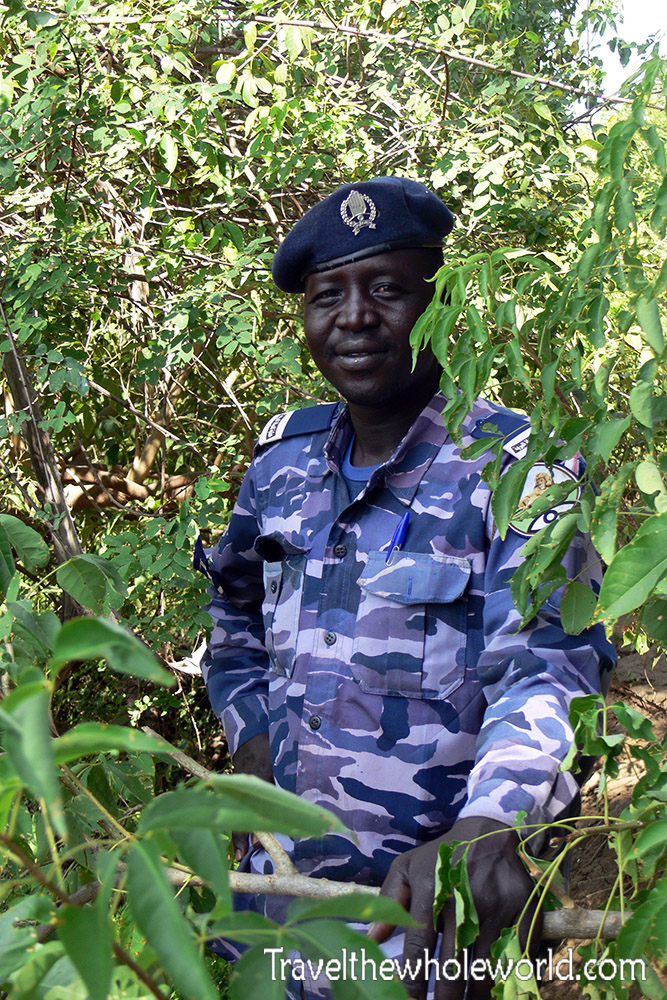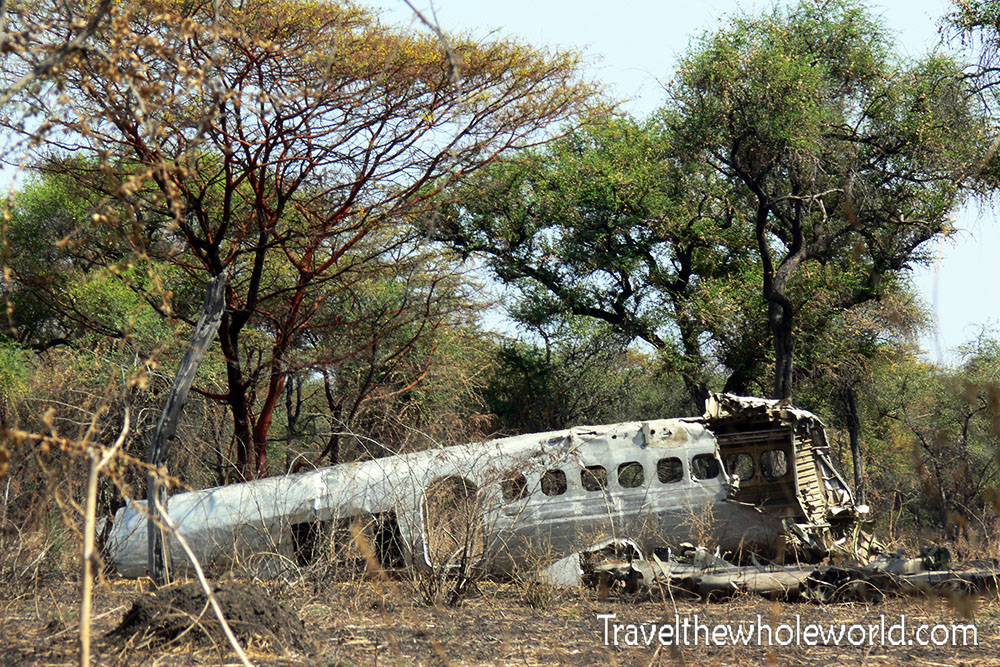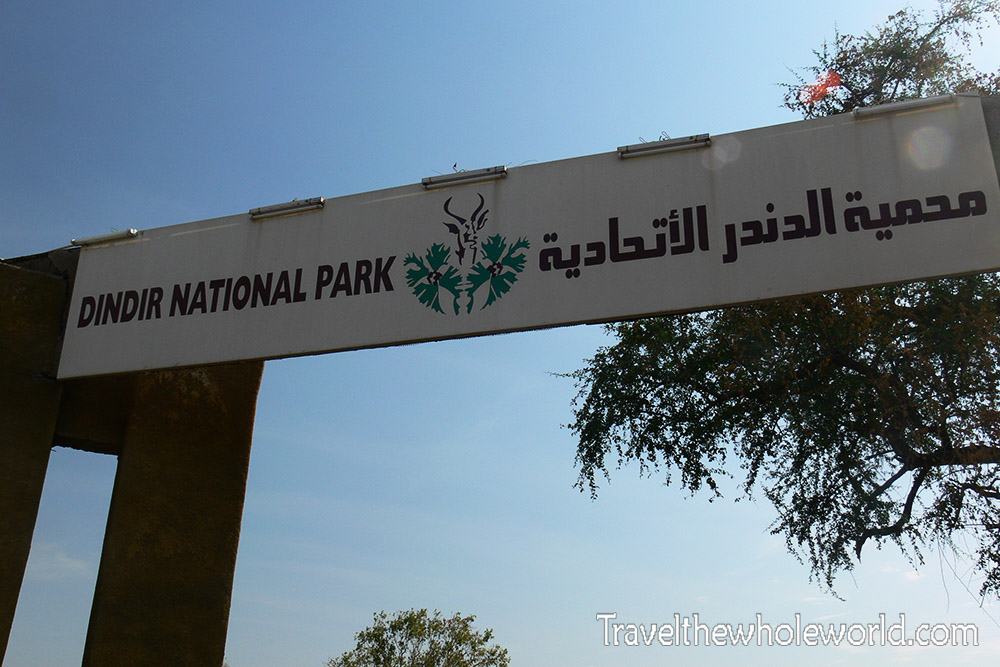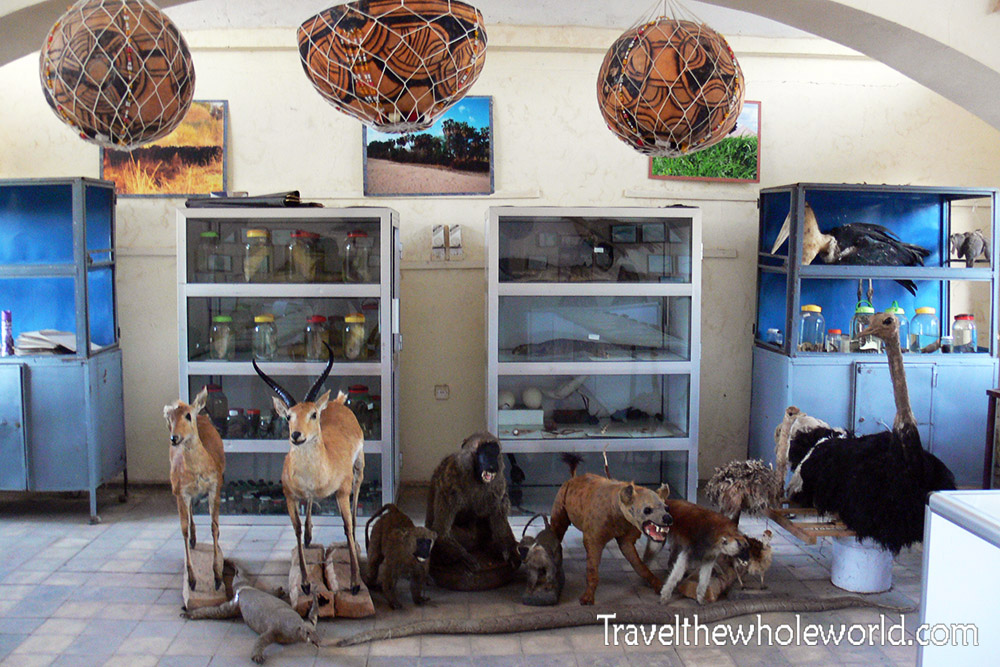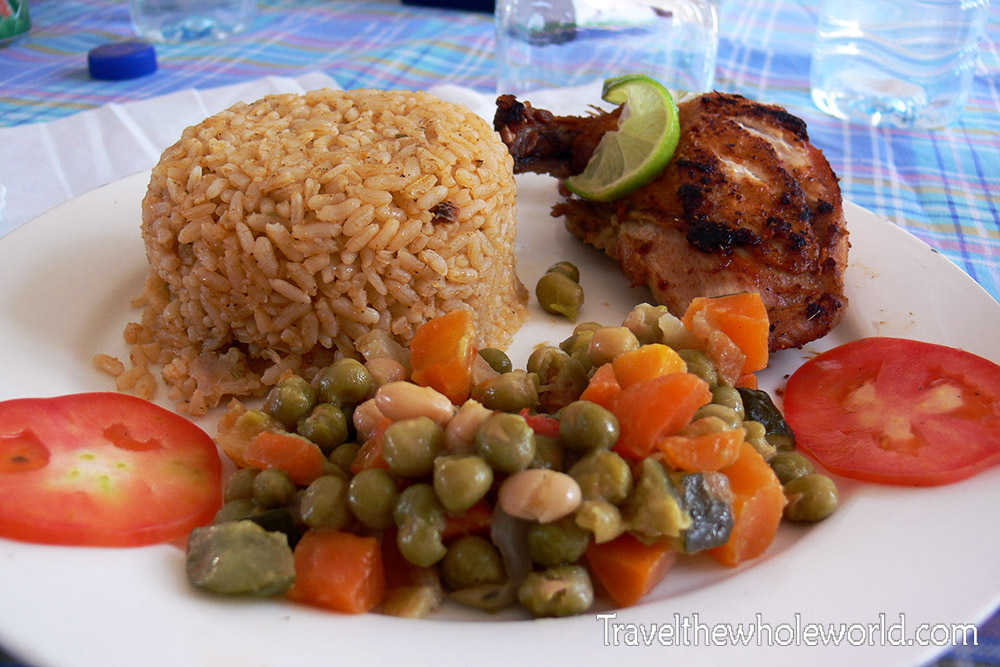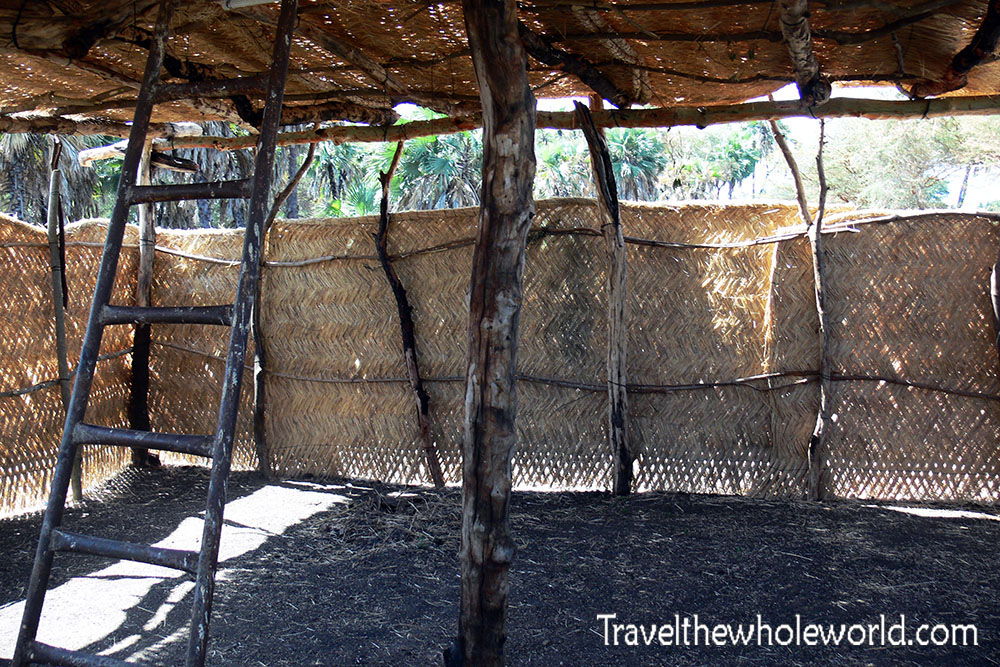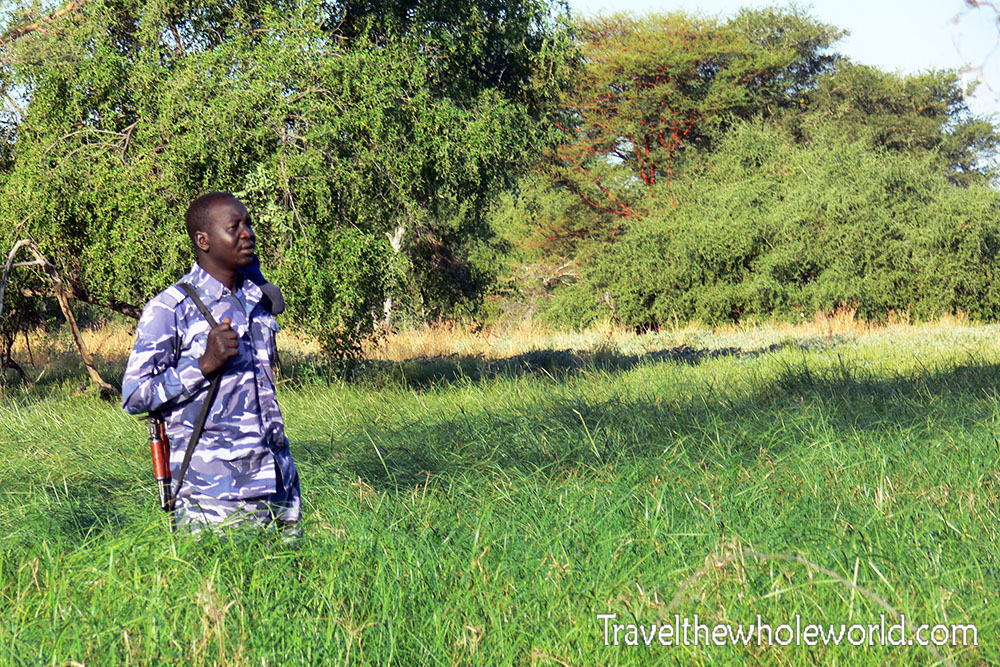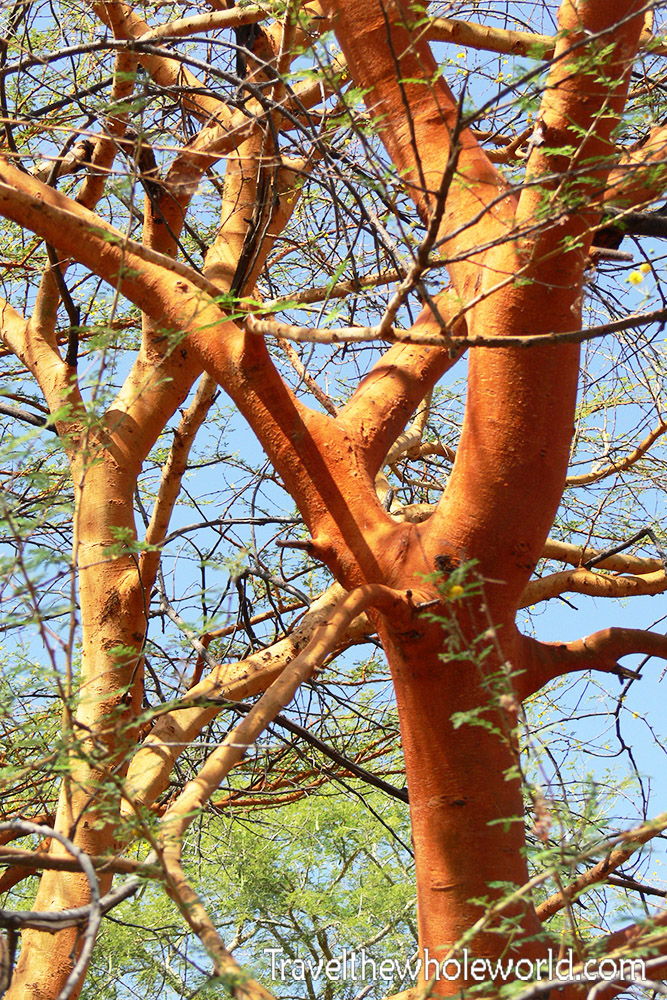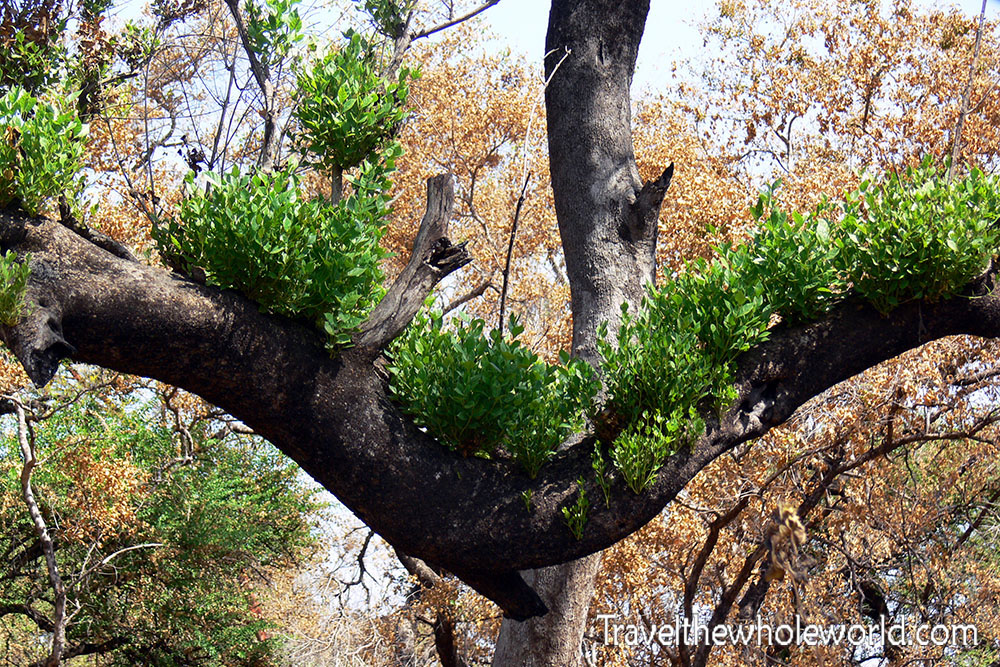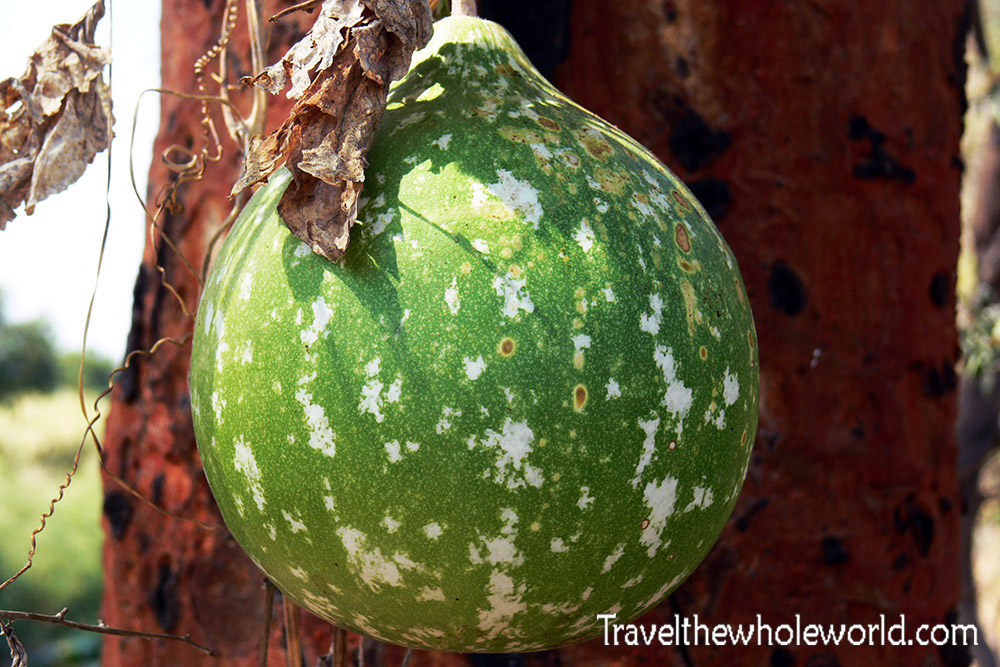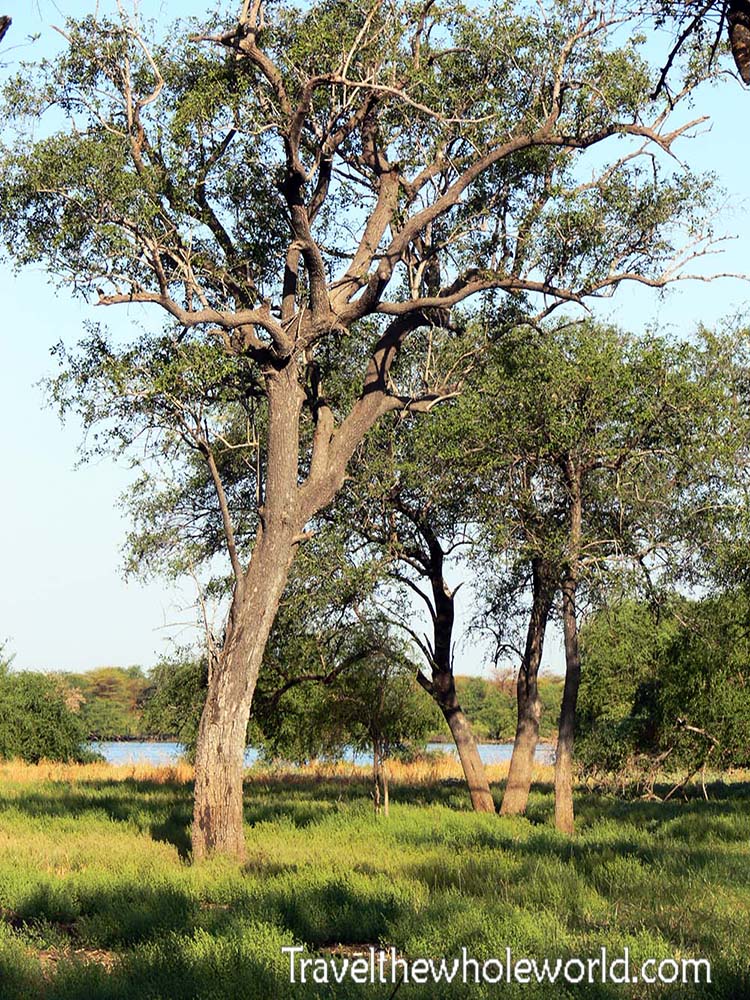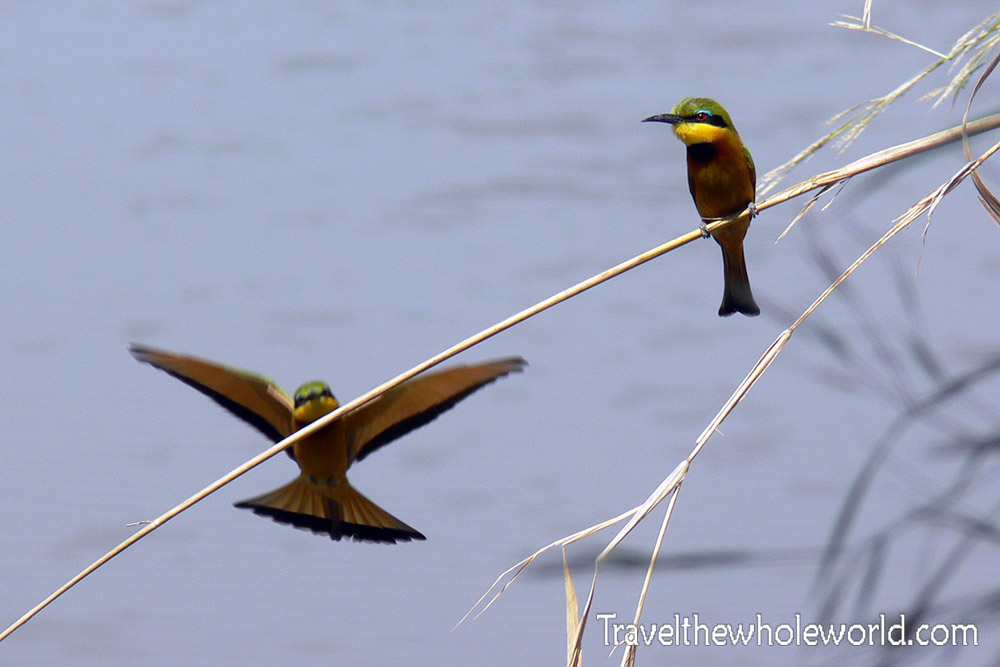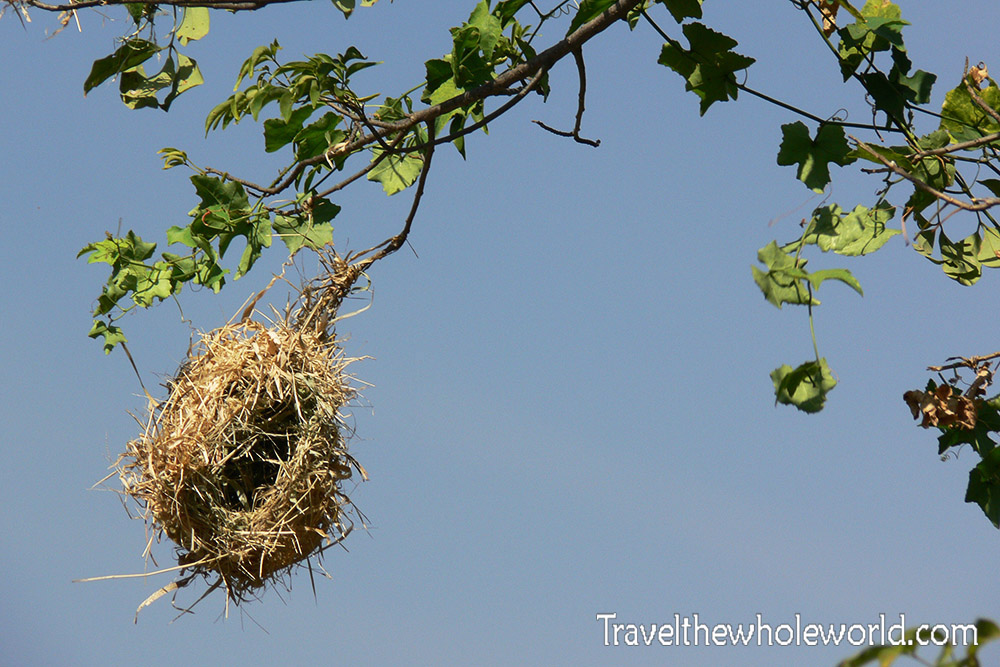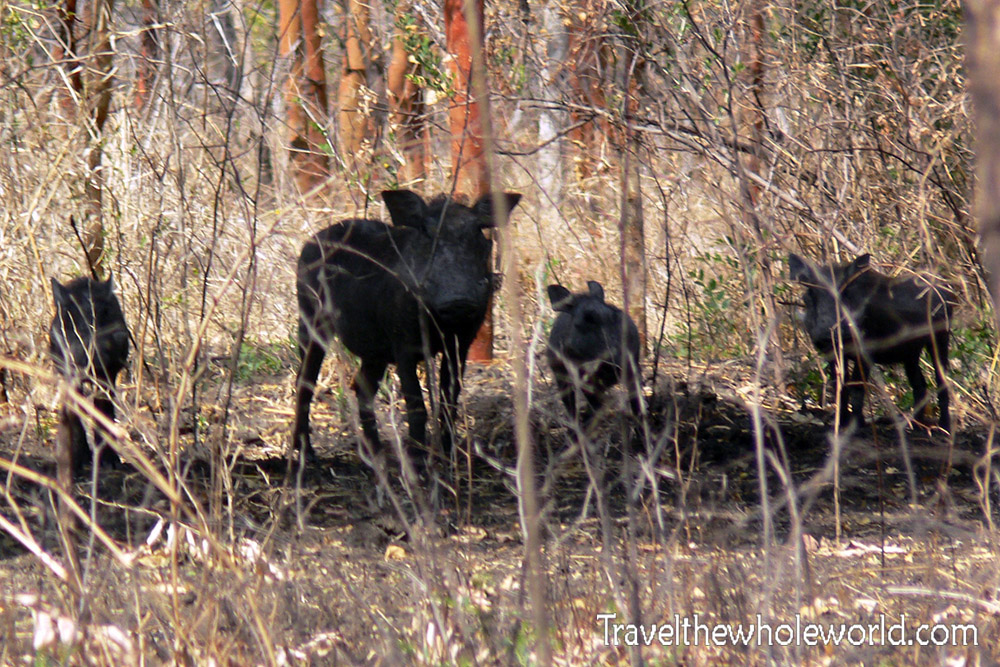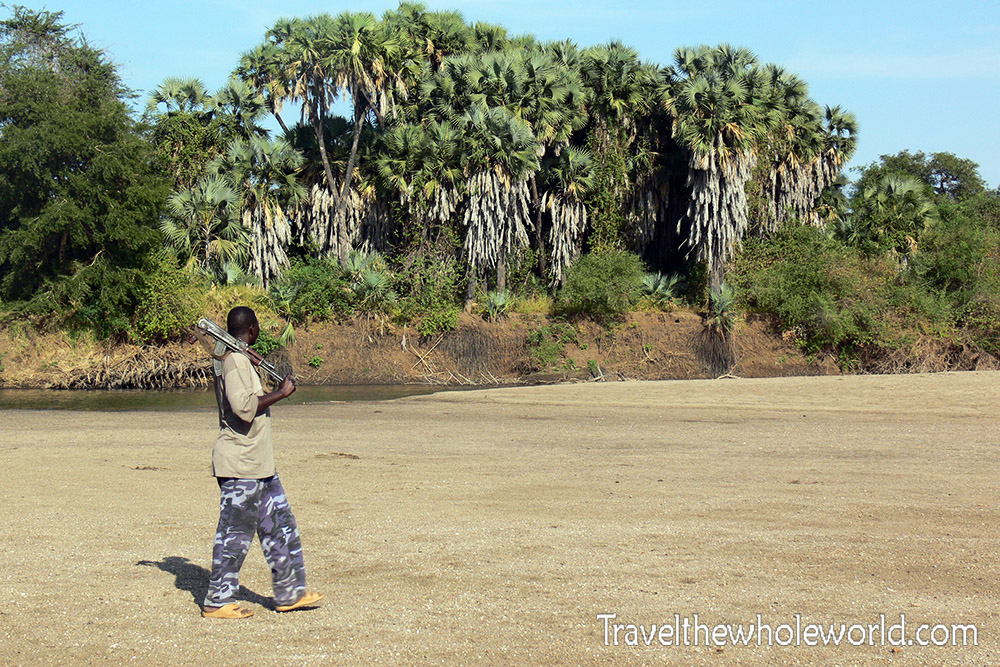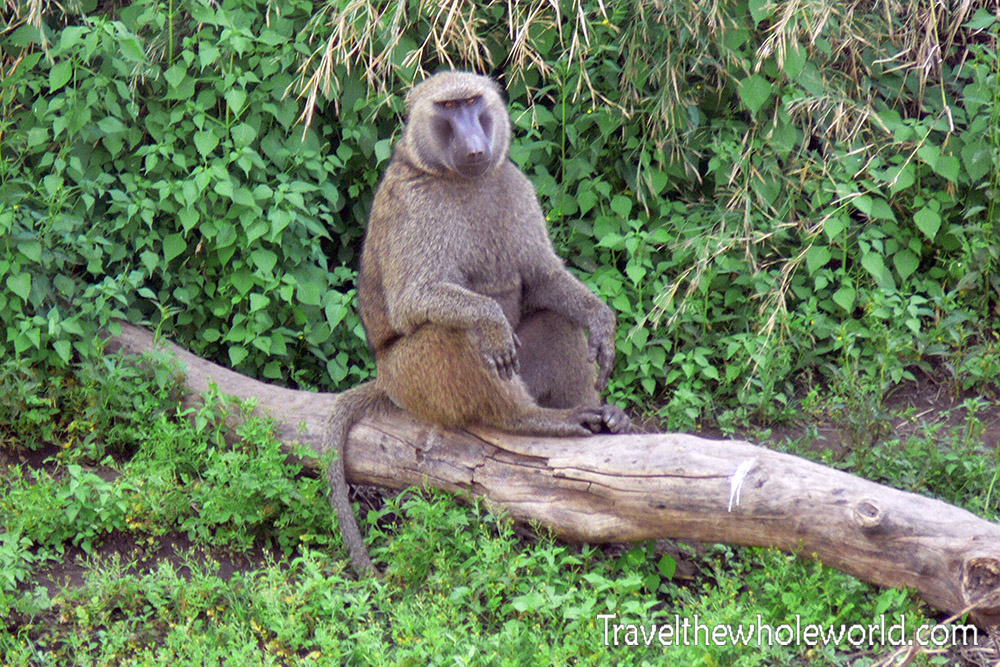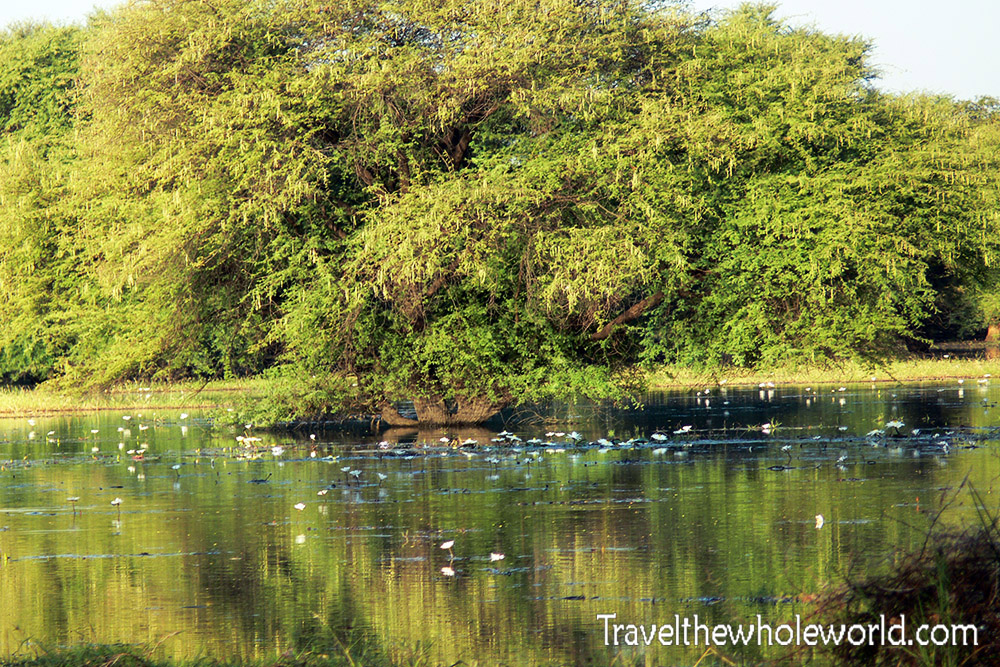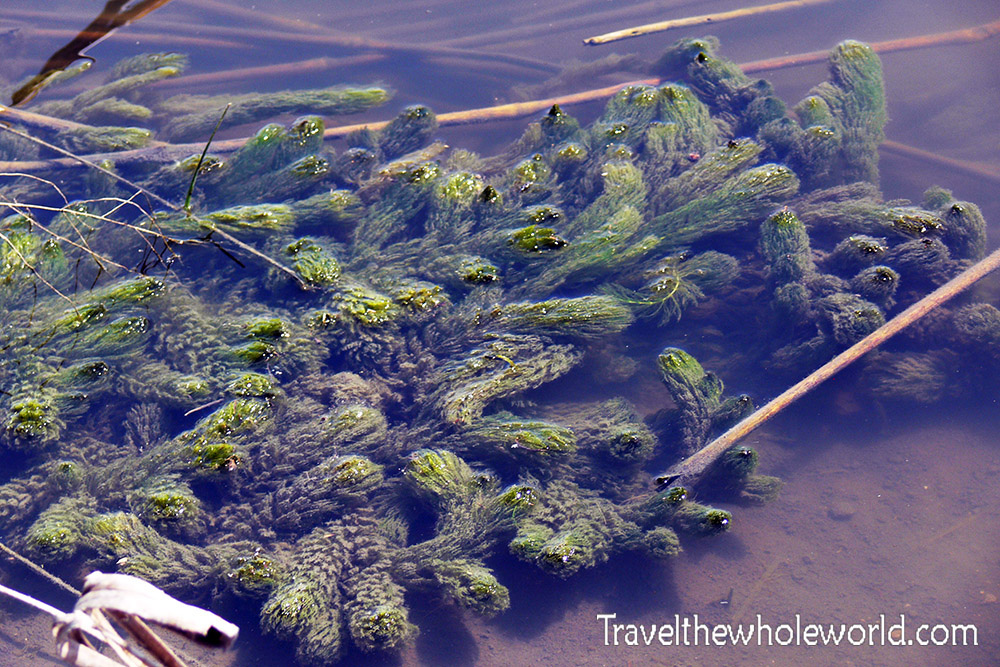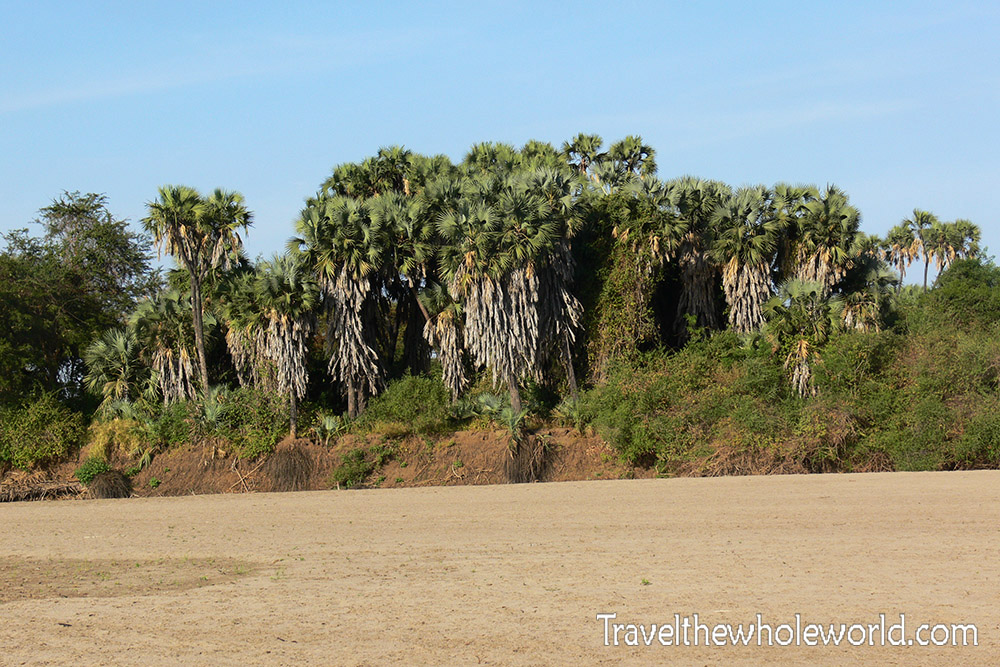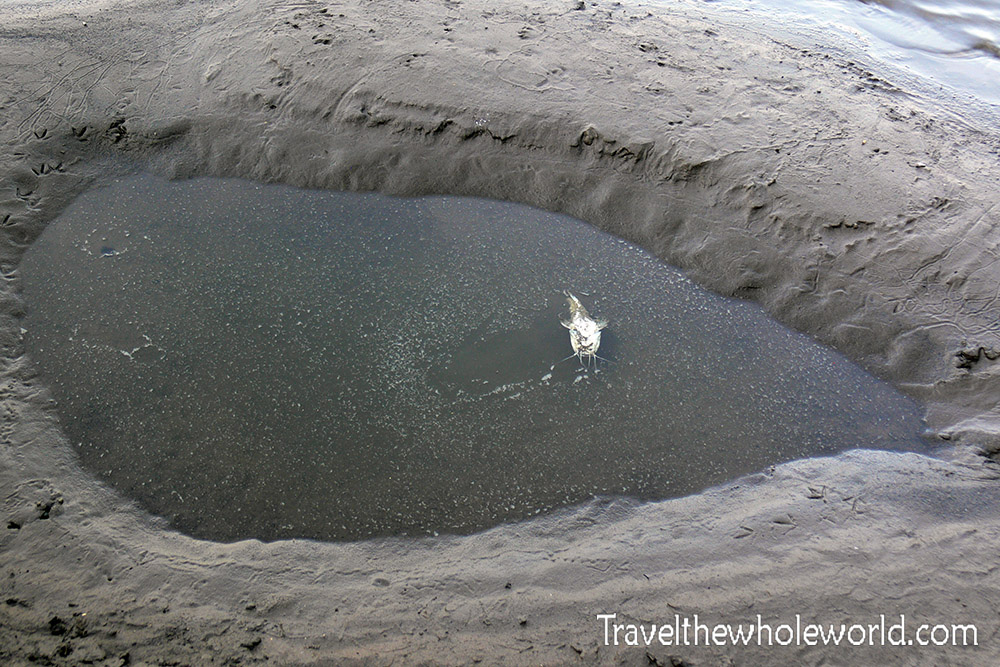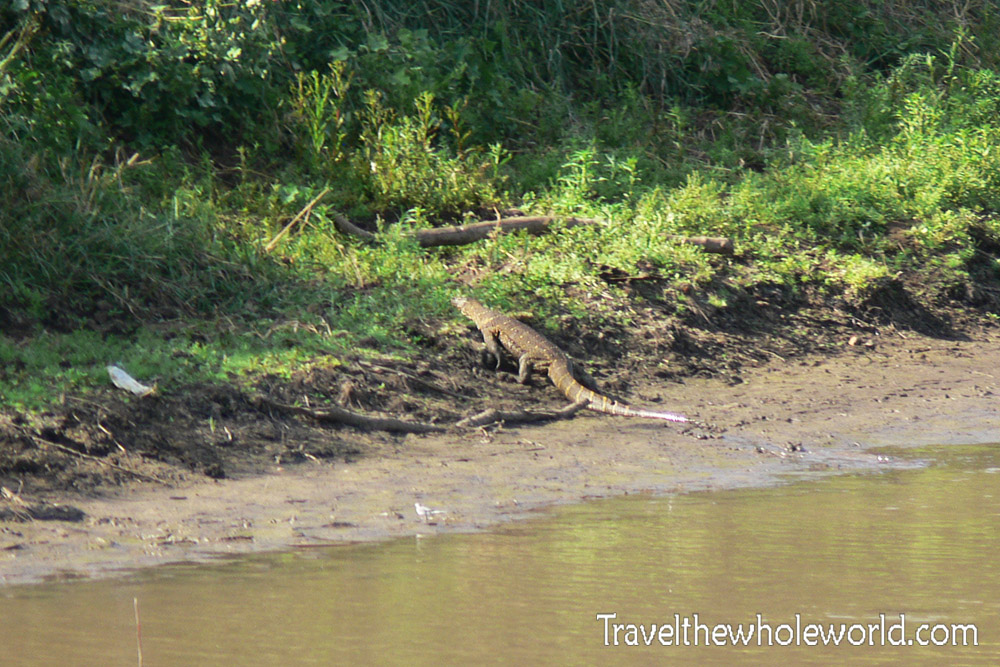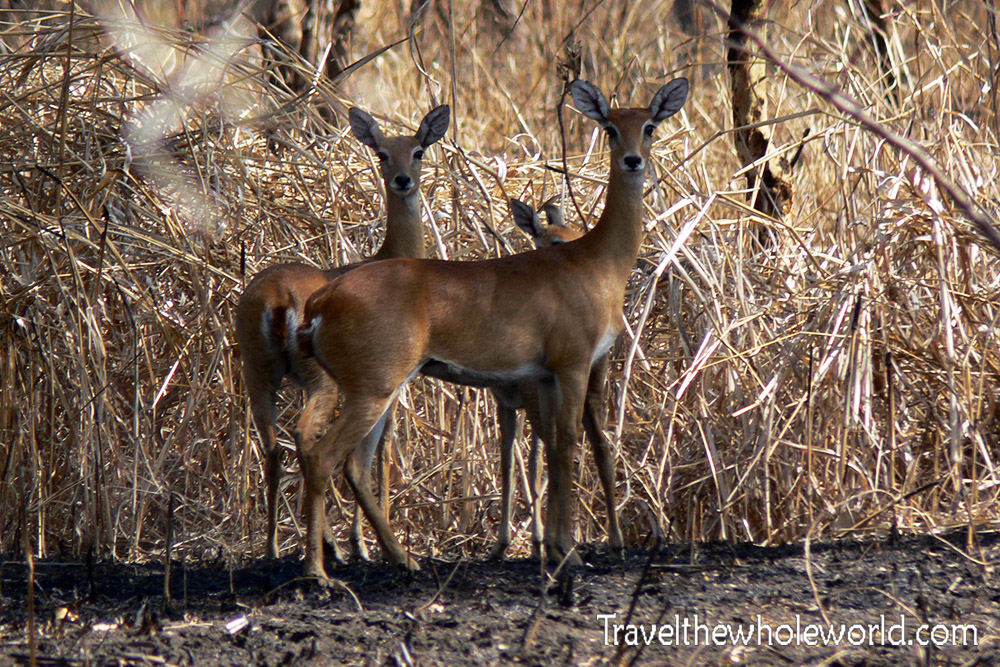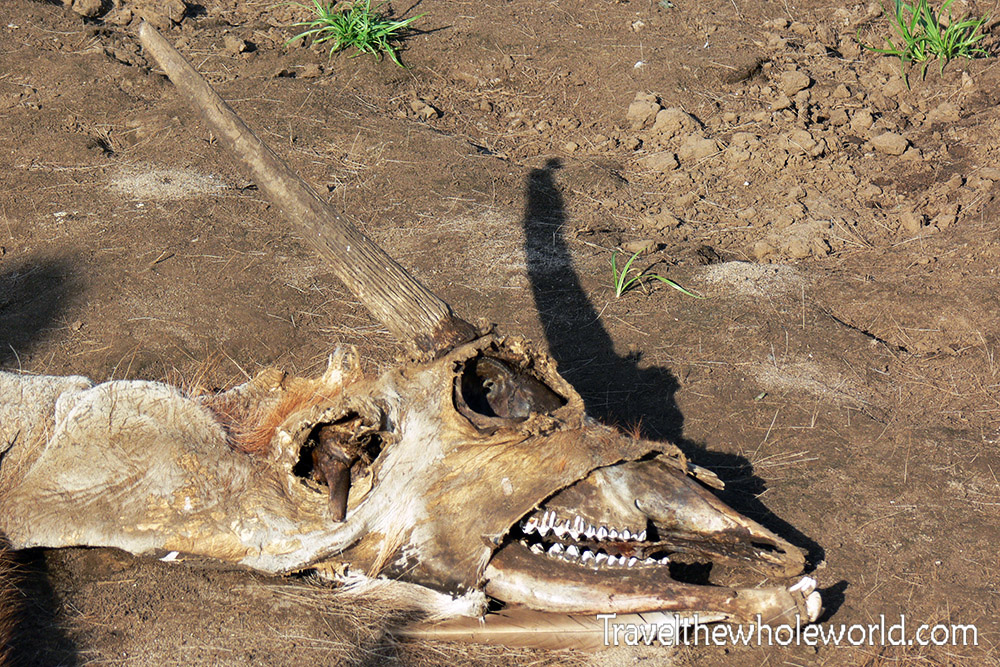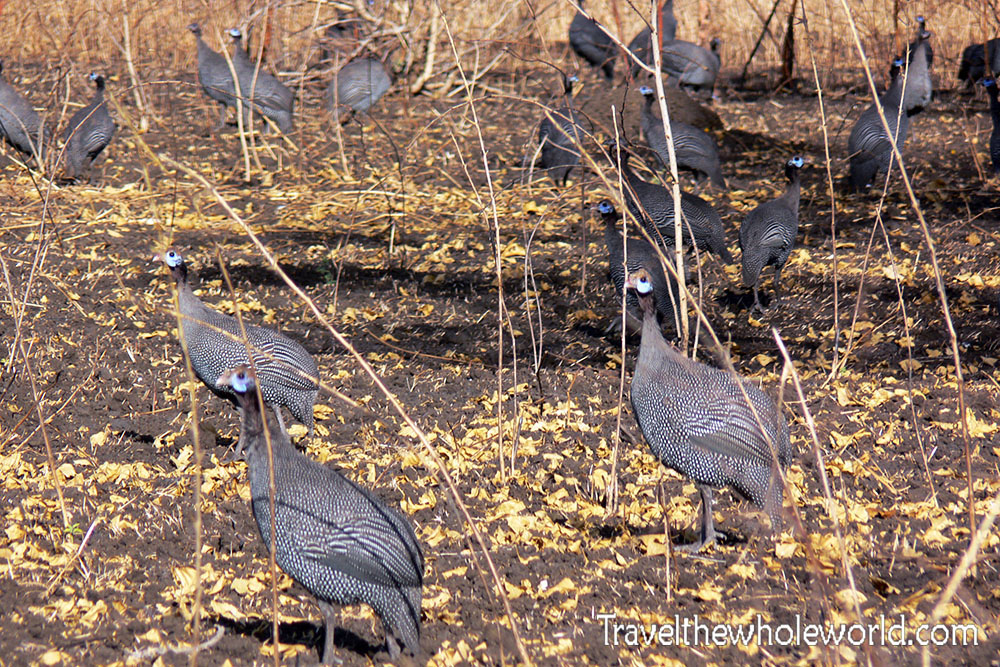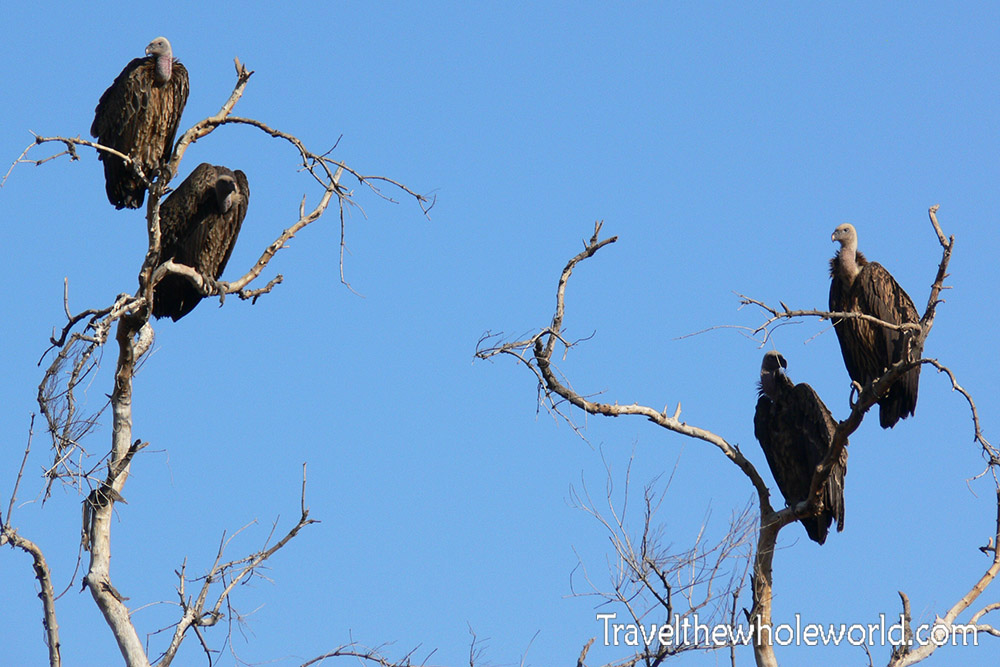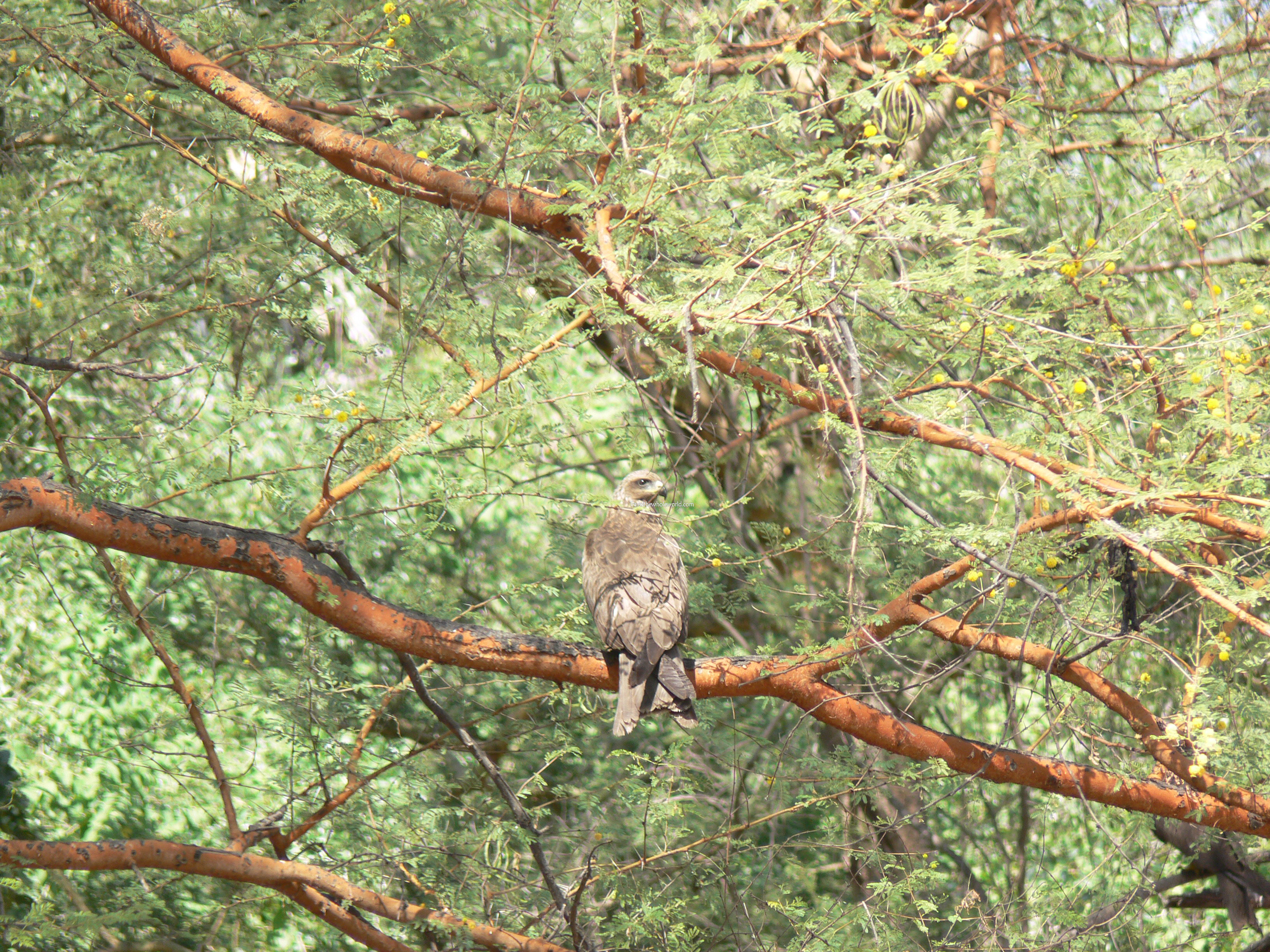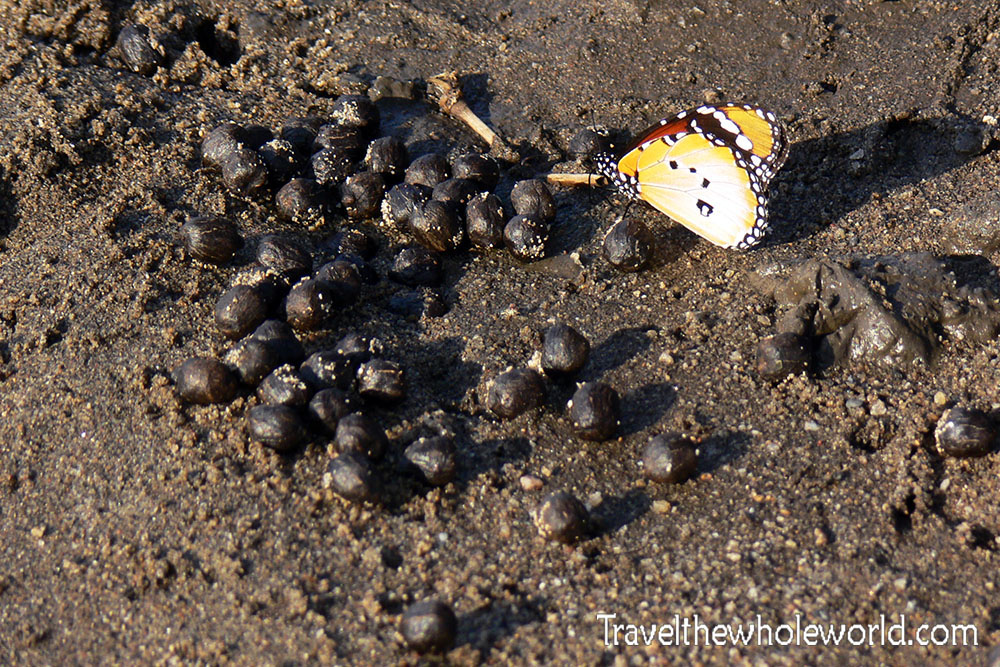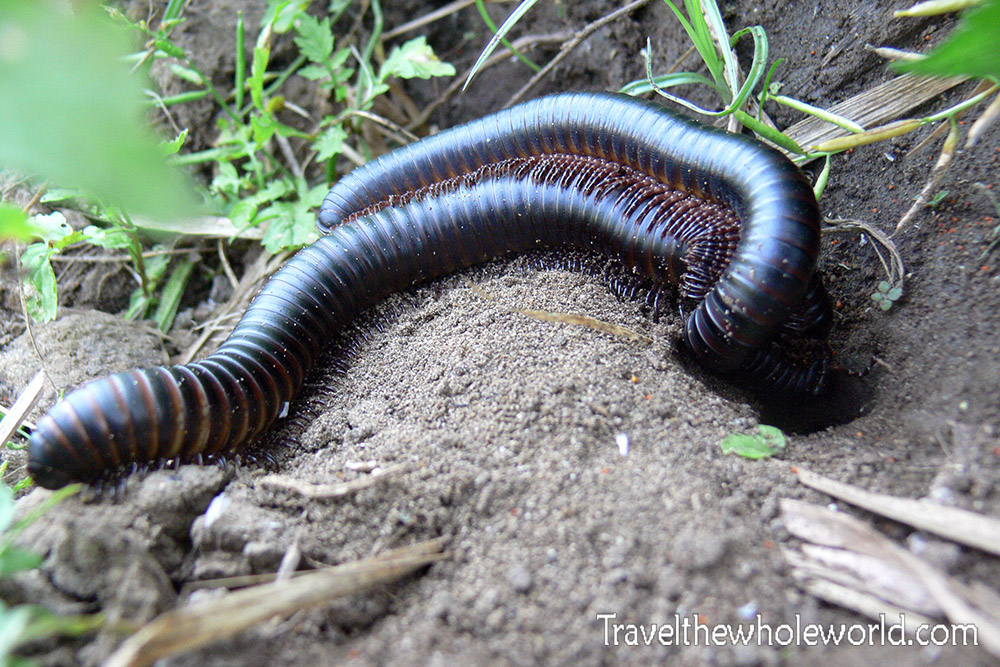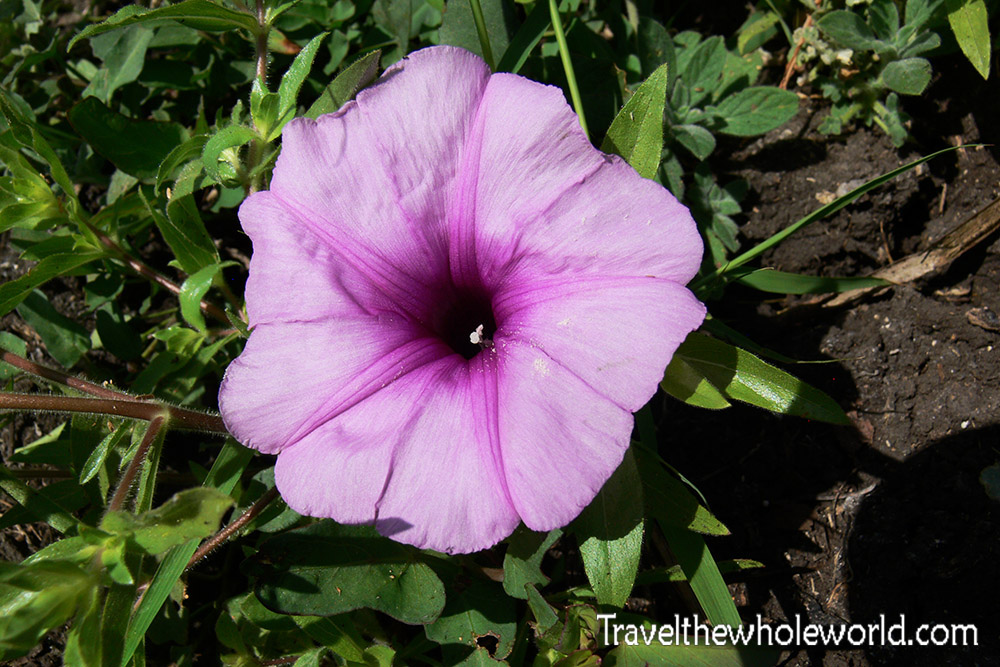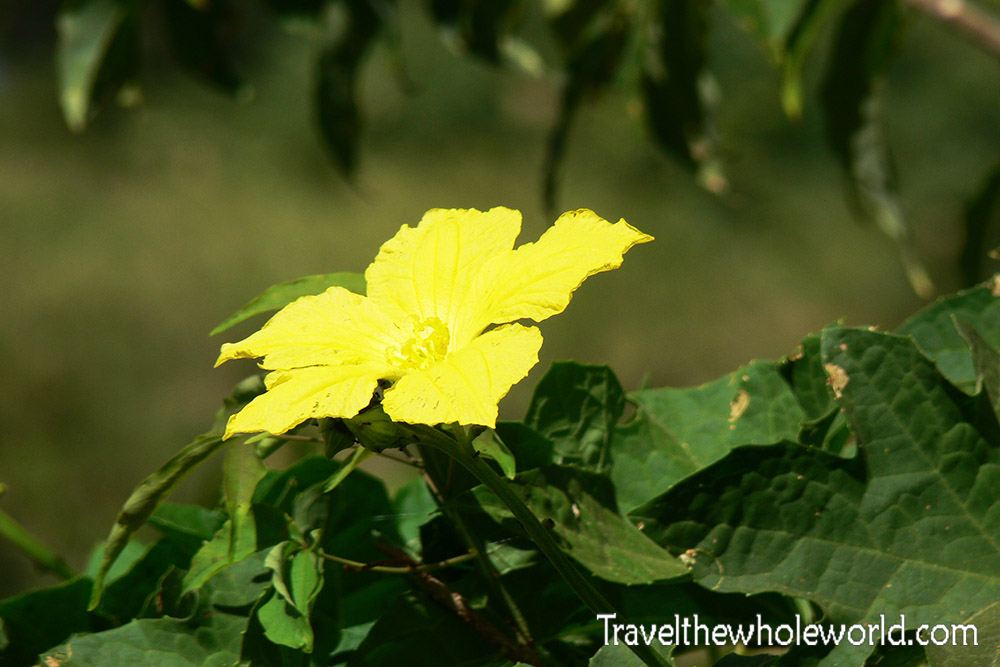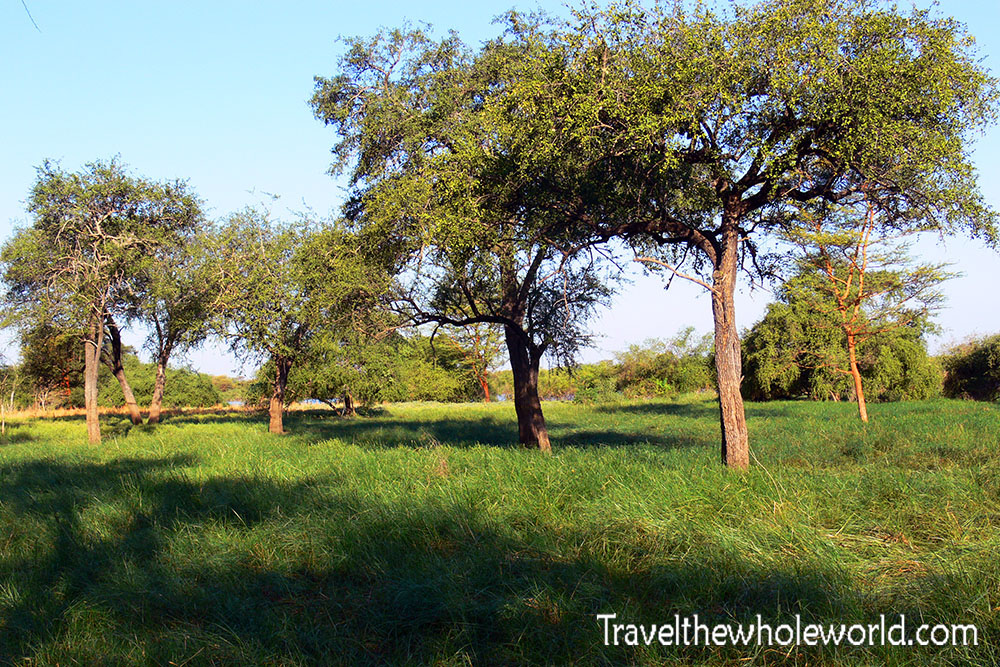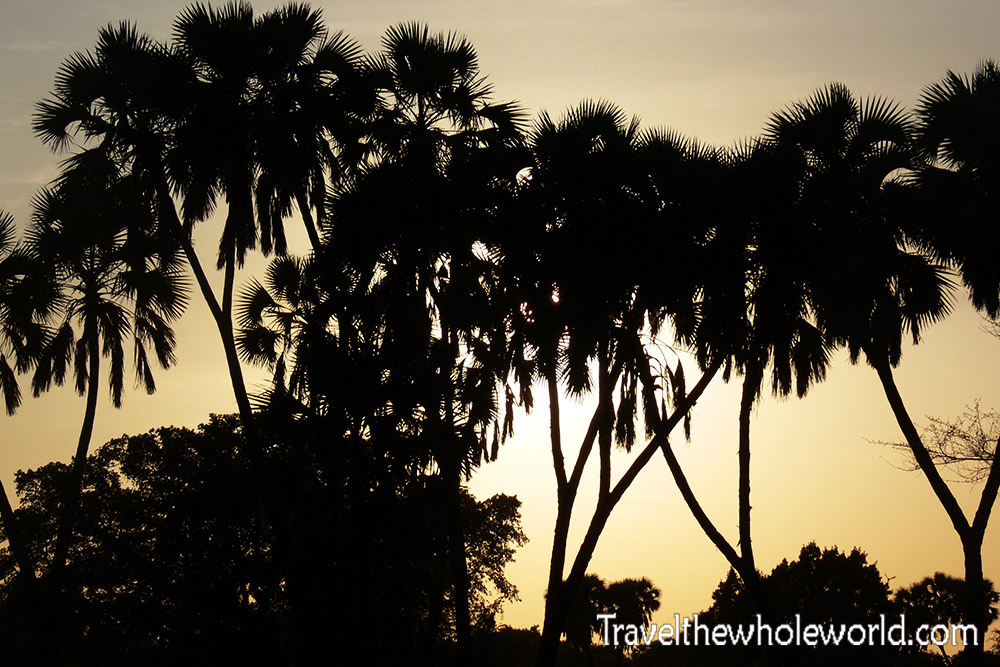Visiting Dinder National Park
During my travels in Sudan, the further place I visited from the capital was to the south and east. I left the deserts of Khartoum and headed for one of their most known national parks. Getting to Dinder proved to be a logistical challenge, not just for me but even for my locally hired driver! As we headed further away from the capital, the homes began to change from city homes to the more traditional ones. The further south I went the more dramatic this was. It seemed like Arabic was still the primary language here, but most were in primitive conditions without electricity.
One of the great things about road trips is watching the terrain gradually transform. As I continued further south into the country, the terrain slowly changed from dry arid land to a dark rich soil. Above you can see some of the fertile soil which is great for growing crops, and the local villagers of course use this to their advantage. Finally the terrain continued to gradually change until it completely gave way to the African Savannah in the photo below.
Once we were into the Savannah and later wooded areas, I started to encounter lots of villagers. It seemed most still used camels as forms of transportation even though they were out of the desert. Lots of them like this man were using them to carrying loads, such as firewood in this case.
A common sight in Sudan is road side service. This woman and her daughter had set up their own little tea stand. A service I didn’t expect though was fortune telling! They let me ask any question and would tell me if it would come true or not. I wasn’t really sure what to ask at first, but I ended up trying to see if I would ever become successful at climbing the Seven Summits. Despite being so far from the ocean she pulled out a handful of seashells and rolled them on the ground. Instead of an immediate answer she stared long and hard, and finally predicted success. At the time I had climbed two of the Seven Summits, but ten years later I have only one remaining; looks like knows her stuff!
My drive towards Dinder was clearly a mini adventure. Without hotels along the way, we ended up randomly staying one night at a Sudanese military base. I was surprised they allowed us to to do this. I got to sleep in the barracks with the troops. We had beds arranged in a grid in a large room, while giant fans blew on us all night to keep the mosquitoes off. After I left, some of them escorted me the rest of the journey. Above is a photo of one of the soldiers, below is a wrecked plane I found in the woods.
The soldiers that joined us ended up directing my driver how to get the rest of the way to Dinder. We entered some more Savannah that had so many random roads and turns it seemed impossible to memorize. I seriously thought the soldier was guessing and make them up as they came about. he seemed like he knew where he was going, and eventually we entered forest again. Finally after two days of driving, we spotted this sign; Dinder National Park!
My expectations of Dinder were incredibly low. I didn’t expect a welcome sign, and figured the rest would just be essentially a wilderness without any infrastructure. Imagine my surprise to find out they had a small museum, a restaurant, and several rooms to stay in. When I was at the military base, a Sudanese colonel had just gotten married and asked if he could join us for his honeymoon. Other than the newly wed couple, a couple troops, and my driver, we had the whole place to ourselves.
Around the center of the restaurant and rooms were lots of simple huts being built. I’m not sure what they were for, maybe an expensive place for locals to hang out during the middle of the day, or they could be some really cheap rooms coming up in the future! The rooms I actually stayed in were the normal kind of rooms you’d expect in a less traveled part of Africa. The restaurant was a bit nicer though, it even had a large dining area and a TV playing American movies. I was bombarded with questions from locals about the cultural differences between the United States and Sudan, and if in fact some of the things from the movies were actually true.
Anyway though, time to finally do what I came here for, explore! When I expressed that I wanted to walk around Dinder some of the troops seemed pleasantly surprised. This surprised me though, why else would I have come! So the solider that had escorted me from the base as well as one who was already at Dinder joined me for a walk in the bush.
I really didn’t know what to expect in Dinder. Some of my first obversations that some of the trees were orange. Ohters had some smaller plants growing off their branches, something I normally see in a cloud forest.
Before I was in Dinder, I had explored some of the deserts surrounding the Meroe Pyramids which are north of Khartoum. I’m pretty certain that this fruit hanging from a tree in Dinder was the same exact one growing out of the Sahara desert further north. If so, it’s a pretty adaptable plan to be able to survive in such different conditions!
With most of Sudan being desert, I was surprised by some of the scenery in Dinder. Despite it also being the dry season, there were several small bodies of water here, that supported both large swaths of grass as well as trees.
The trees were homes to lots of colorful birds. This species above I saw almost immediately outside where I was staying. I didn’t know what they were at the time, but these guys are called little bee eaters. After this trip to Sudan, I saw them often in other nearby countries like Somalia, Ethiopia, etc. I had assumed the nest below belonged to the bird eaters, but this is actually belongs to weaver birds. I waited for them, but they didn’t come home while I was around.
There was quite a bit of wildlife to be seen in Dinder. I was actually pretty impressed by how much I saw, but a bit disappointed by how much I actually captured with my camera. Since there are so few visitors to Dinder, the wildlife here truly is wild. Unlike places like the Serengeti where you can just pull right up to a pride of lions or herd of zebras, animals in Dinder are extremely wary about your presence. Even from a long distance, they’ll keep a cautious eye on you and flee at any sudden movements. A good example is this nervous family of warthogs that spotted me through the trees. I took this photo with full zoom before they took off. Had this been Kenya or Tanzania, I probably would have gotten ten times closer without them worrying much.
Since the wildlife here is not accustomed to visitors, there is a higher risk of being attacked. The local soldiers that joined me carried AK-47’s that they’d use as a last resort. Above is one of my guards as we hiked along a dried out river bed. In the photo below you can see a fresh lion paw print, maybe even from the night before! That’s as close as I got to seeing a lion here, but prove that they exist.
One of the first large animals I saw was a group of baboons. Probably because this baboon was so large, he didn’t seem to care about our presence. There were other large animals I saw such as a few water buffaloes, but I wasn’t able to get any reasonable shots of them. Water buffaloes are by far the most dangerous animals in Africa, so I decided not to give them a chance to attack me!
Areas by the water were the best places to see wildlife. This trip to Dinder was long before I had invested in a real SLR camera, so I didn’t have the great zoom or high resolution that I do now. In this photo above, dozens of water fowl below this tree look more like white lilies than birds. I took this photo below just to show some of the plant life within the swampy areas of Dinder; again definitely not what I was expecting to find here.
The swampy areas that I photographed harbored lots of water and plant life even though we were well into the dry season. I can’t imagine what this place might look like during the wet season, it’s probably more like a rainforest. During our hike, we mostly followed the Dinder river that was reduced to a small stream. The locals told me that in the rainy season, it looked more like a fast moving lake than a river. As we hiked it, we came across occasional pools of water that had gotten isolated as the water receded. This fish below failed to survive because it lacked the intelligence to leap into the river that was only a foot away.
My favorite site along the river was definitely this giant lizard. This is probably the largest wild monitor lizard I’ve ever seen in my life. I have to emphasize again that I didn’t high end camera, so you can’t really appreciate the size of this guy in my photo.
It seems that I came across three species of antelope and gazelle while at Dinder. Since most of the wildlife is so skittish here, I was lucky this small group didn’t run away when I photographed them. In the photo below you can see a dead buck; one of the easier animals to photograph in Dinder.
Another difference I hadn’t thought about regarding the safaris of east African were driver skills. It’s a lot easier to be a driver in Tanzania or Kenya since the animals cooperate, but other less traveled places such as Namibia requires a bit of patience from the driver. I was more annoyed than I’d like to admit with my driver here in Sudan. He drove at high speeds through the wilderness here, scattering terrified animals such as warthogs, gazelles, and several flights of guinea fowl. Luckily there were so many that I was able to see another group of them later in the day. I’ve seen this species of bird from Sudan all the way at the bottom of Africa in Krugger Park.
Some of the larger birds I came across were pretty common throughout the park. I often saw these giant vultures hanging out in areas where they could patiently wait for their next meal. I spotted this large hawk often in Dinder as well. I’m almost certain this was the same species that I came across in Tanzania nearly a decade before. the hawks in Tanzania were so bold they’d take food from your hands!
My last photos on this page are a bit random. I came across this area that had dozens of butterflies on the ground, and another area that was covered with giant millipedes. During my long hike through the woods I didn’t see a single millipede, but once I returned back to the river I came across several dozen of them. Nearly every single one of them were mating, like the pair above.
These two shows don’t show anything special, just two random flowers I had come across while in the wetter regions of Dinder.
Having spent a few nights here in Dinder, I can say that I feel there was much more to see. Especially if I had revisited in the wet season. While there weren’t towering mountains and huge canyons to peer over, the unexpected lushness in parts close to the river as well as all the wildlife I saw make this a great place to visit. If you’ve never been to Africa or on a safari, I wouldn’t recommend coming to Dinder as your first adventure. You’ll see way more in eastern or even southern Africa. But once you’ve done those trips, you’ll truly appreciate what you can find here. While it’s much more difficult to spot a lion for example, if you do it’ll have a lot more meaning compared to driving right up to one in other parts of the continent. These two shots above and below show my favorite scenery from Dinder.
